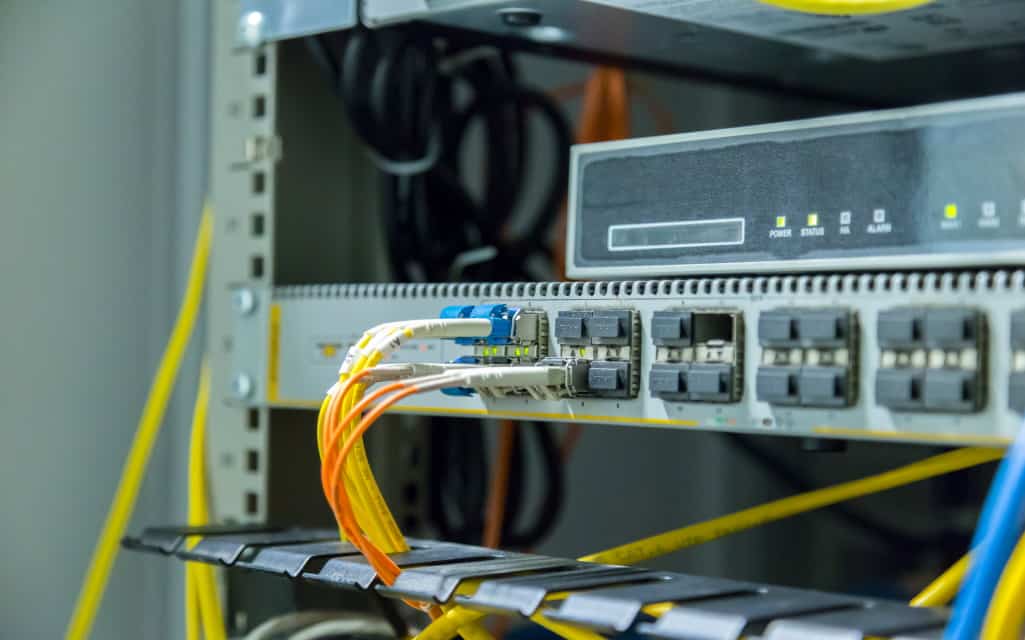The magic of the Internet can be facilitated in a number of different ways, and one of those means is fiber optics. Fiber communications involve the use of fiber-optic cables to transmit light. While the use of light to represent data may seem like sorcery, it all comes down to some relatively simple science.
What Is Fiber-Optic Internet?
Fiber optics involves the use of light to transmit data. On the source end, data is encoded into a series of light pulses that are then sent to a recipient. That light bounces from one side of the cabling to the next and so forth as it hurtles forward to its destination. At the receiving end, the pulses of light are decoded back into data. All of this is made possible with cables made up of glass filaments. Using lasers, the light pulses can travel over very long distances while maintaining strong signal strength and thus data integrity.
How Does Fiber Differ From Cable and DSL?
Like fiber, cable and DSL are forms of broadband Internet. DLS and cable Internet use cables too, but those cables contain copper wires as opposed to glass filaments. These are the same types of cables used to transmit telephone and television signals. Earlier, it was mentioned that fiber maintains strong signal strength. In other words, it experiences low attenuation. Cable and DSL, on the other hand, experience more attenuation, which is often the limiter for the speeds your local ISP is able to offer. If the speeds are the same, however, then the end-user experience is the same.
Is Fiber Superior?
In a vacuum, fiber Internet is generally superior to cable Internet and DSL. In real life, there are other factors to consider. If you have all three options available in your region, the fiber option will usually be faster than cable, and the cable option will usually be faster than DSL. However, the cable service will generally be less expensive. The proponent of fiber would argue that fiber despite being more expensive is the better value. While true, that may not matter to your if your local cable service meets your needs.
Are There Different Types of Fiber?
There are three primary types of fiber Internet. FTTH stands for fiber to the home, and this means that the fiber line from your provider runs directly you into home. FTTC stands for fiber to the curb. This means that you have coaxial cables connecting the fiber to the home. FTTC is inferior to FTTH, but the practical differences for the average consumer are often marginal. FTTN stands for fiber to the node. With FTTN, what matters is your distance from the node, and if your home is a significant distance from the node, then the cable service in your area may actually be faster.
How Do You Get Fiber Internet?
Despite fiber being superior in most cases, you may not have access to it depending on where you live. In the United States, cable is far more prevalent than fiber, and many if not most communities do not have multiple options. This is, fortunately, expected to change in the decade ahead. If you are privileged enough to have multiple options, the best choice for you will come down to the needs of your household and the price comparison of the various services within that context.



